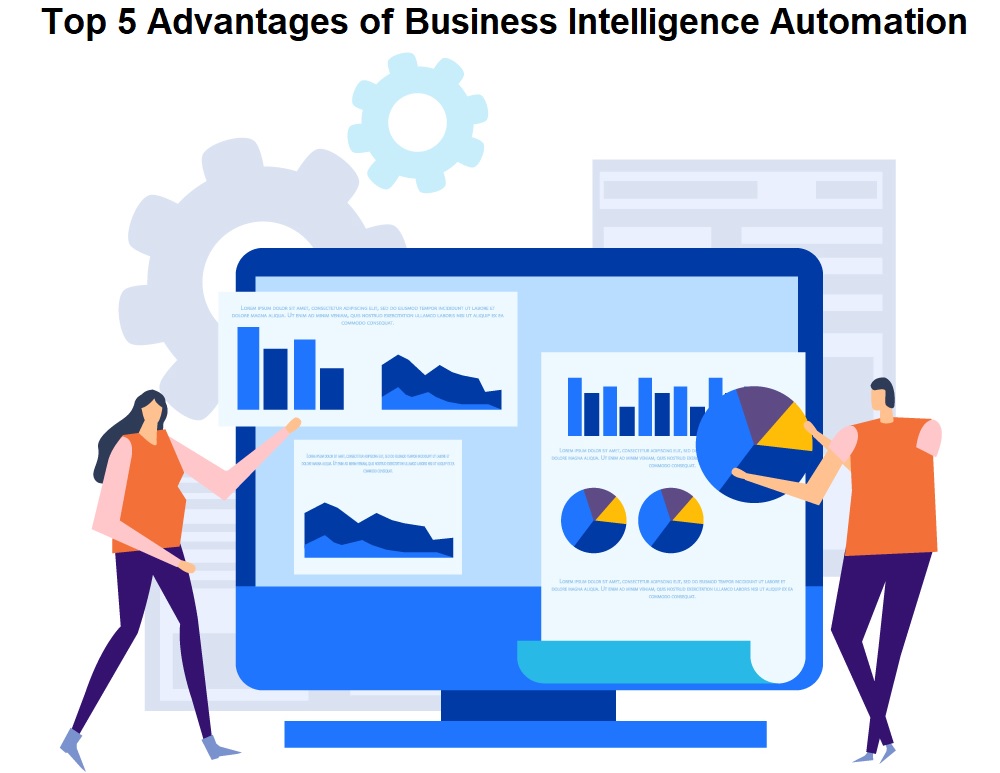When it comes to the underlying business data, it is only obvious that - for any type of organization - extracting more value from data to make more informed decisions and executing those decisions faster is vital. Proper in-depth BI handling opens vast scaling horizons and helps businesses efficiently adapt to dynamically shifting market conditions. And there are many more benefits where that comes from. But in order to reap them, one has to employ a knowledgeable, streamlined approach to gathering, structuring, and processing all the insightful data.
With numerous channels acting as equally fruitful BI sources, internal specifics, data type segmentations, huge incoming volumes of data, and set time limits to handle it all for the best effect, manual approaches become stale. And this is where up-to-date automation tools come in to save the day. In particular, we've discovered five ways automation may help you unravel the full potential of your in-house data analytics and business intelligence (BI) processing.
Whether you're already working on transforming into a completely data-driven organization or are just getting started, here’s what you get with a proper hang on BI automation.
Top 5 Advantages of Business Intelligence Automation
1. Data quality boost
Passing chunks of poor-quality data after the processing can lead to some nasty financial and reputation losses. And many companies today don’t seem to invest enough time into thorough data preparation, which is a proper way to prevent data mislabeling beforehand. On top of that, the time analysts spend preparing data may be considerably reduced by automating data collection, cleaning, and restoration. Try using specialized tools for automated data preparation.
Then, there is also the concept of RPA - robotic process automation where automation algorithms are used to gather data from numerous sources with the initial quality check and submit it to live analysts in a neatly compiled report or file of a certain format. You just need to turn to a reliable business intelligence agency to start automating and streamlining your efforts.
2. Multiple sources processing
An automated approach allows interconnecting systems that may not even have an API. This means that you can streamline data gathering across proprietary mainframes, legacy systems, and virtual data environments. Thus, you get opportunities for both collecting core data sets for further analysis and extracting specific data pieces, like exchange rate data, in the required format from the get-go.
The powers of artificial intelligence can be employed for the rapid and proper structuring of many different types of data gathered from different sources. This enables companies and entrepreneurs to efficiently gather and prepare document scans, PDFs and images, handwritten data, data from emails, etc. for further in-depth analytics.
3. On-time acting on decisions
The definitive effort in the analytics pipeline is converting choices into actions. It's where the decision-maker puts their BI platform's analysis into action. The top automated data analytics platforms on the market already have one-click CTA generators (rapidly composed calls-to-action based on the underlying data inputs). With a convenient automated BI analytics dashboard in hand, a business gets a far deeper reach into insights it may gain from all incoming and internally generated data.
4. Boosted IT performance
Establishing RPA or other BI automation approaches across enterprise departments, one may achieve unprecedented performance “smooth-outs” all across the board. Thus, the quality of invoice processing can be perfected by automating data reports the workers of the financial department receive and supplying employees with convenient notifications and reminders. You can see how you may tackle complex workflow processes and decisions in other departments and get ultimate cost- and time-saving benefits.
5. Enhanced workflow collaboration
Timely BI automation enables company employees to easily share insights and employ joint efforts in data processing and crucial decision-making. All due to automated structuring and fast access to readily compiled and converted data reports. Once one employee gets the report, they may immediately share it or some of its parts with others for outside perspectives. As a whole, each working day may be conveniently kicked off with a summarizing pack of insights on shifting conversion rates, customer behaviors, demographics, and other paramount business aspects.
Conclusion:
The “use it, don’t abuse it” saying doesn’t really go for business data gathering and processing. Here, every tiny bit and drop of information matters. However, there are many drops that may not mean anything and only waste processing time or bits of poor quality. So it is important to extract insights insightfully. Turn to a leading business intelligence agency right now and do it through automation.








COMMENTS